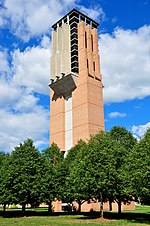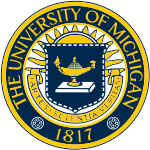Escher Cooperative House
All pages needing cleanupBuildings and structures in Ann Arbor, MichiganCooperatives at the University of MichiganUniversity of Michigan campusWikipedia introduction cleanup from March 2015
Escher Cooperative House, named after artist M. C. Escher, is one of the Inter-Cooperative Council at the University of Michigan's (ICC) 16 student housing cooperatives. It is located at 1500 to 1520 Gilbert Court in Ann Arbor, Michigan. The only North Campus-located cooperative, it is the ICC's largest community with over 150 spaces of residents and 9 separately themed "suites." It is also the only building in Ann Arbor built specifically for cooperative housing.
Excerpt from the Wikipedia article Escher Cooperative House (License: CC BY-SA 3.0, Authors).Escher Cooperative House
Gilbert Court, Ann Arbor
Geographical coordinates (GPS) Address Website Nearby Places Show on map
Geographical coordinates (GPS)
| Latitude | Longitude |
|---|---|
| N 42.2956 ° | E -83.7251 ° |
Address
Escher Cooperative House
Gilbert Court 1500
48105 Ann Arbor
Michigan, United States
Open on Google Maps








